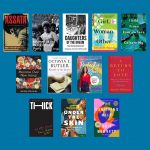The Washington Post published an article this past Thursday entitled “Decline in Teen Sex Levels Off, Survey Shows” on the leveling of teenage sexual activity in the United States, despite the continuation of abstinence-only education in public schools. The leveling comes after a period of decline in teen sex from 2001 to 2007 along with the flattening of a rise in condom use in 2003. Also reported was that approximately one in four teenage girls today has a sexually transmitted disease and that the teen birth rate has increased for the first time in the past 15 years.
While abstinence-only education proponents might argue that teenage sex has decreased because of the mandated (and restrictive) curricula, it has been shown that when teens do have sex, they are now more likely to not use any form of protection—which increases their risk of pregnancy, AIDS, and a number of other sexually transmitted infections. Thus, the number of teens who have unplanned pregnancies or who contract STIs has increased since the rise of abstinence-only sex education. John Santelli of Columbia University is quoted in the article, arguing that, "Since we’ve started pushing abstinence, we have seen no change in the numbers on sexual activity. The other piece of it is: Abstinence education spends a good amount of time bashing condoms. So it’s not surprising, if that’s the message young people are getting, that we’re seeing condom use start to decrease."
Naturally, supporters of abstinence-only education argue otherwise. Valerie Huber of the National Abstinence Education Association argues that sexual education that is not centered on abstinence gives teens a “green light” to sexual activity. In the same vein, Charmaine Yoest of the Family Research Council notes that, “Our culture continues to tell [young girls] the way to be cool is to dress provocatively and to consider nonmarital sexual activity as normative.”
Studies confirming these trends were released, somewhat ironically, during the birthday week of Griswold v. Connecticut (1965), the Supreme Court case that overturned a Connecticut law prohibiting the use of contraceptives and confirmed a woman’s right to privacy. I attended a small gathering on Saturday to not only celebrate the birthday of Griswold, but to also participate in a counter-protest hosted by the National Organization for Women in response to the recent formation of an abstinence-advocating, anti-choice contingent, The Pill Kills. Funded by the American Life League, these individuals lined the sidewalks of the downtown Washington, D.C. Planned Parenthood and harassed individuals entering the clinic.
Members of the Washington Area Clinic Defense Task Force (WACDTF) were present as well, escorting those who entered the clinic all the way from the sidewalk to the doorway, as anti-choicers followed each person seeking care to the door, nearly touching them at times in an attempt to distribute pamphlets, etc. I was in total awe of the work that the WACDTF does, but simultaneously appalled by the behavior of those who verbally harass those seeking care at Planned Parenthood.
Though Planned Parenthood does provide abortions, it also provides a whole slew of other kinds of crucial reproductive care to all women and men, no matter their ability to pay. At Planned Parenthoods in Washington, D.C. for instance, one can have a gynecological exam, seek pregnancy planning, obtain various forms of birth control, and receive testing for sexually transmitted infections such as HIV/AIDS.
Given the importance of the services that Planned Parenthood provides, I somewhat naively thought that such badgering at their health centers was illegal.
Coupled with the Washington Post piece, my Saturday morning birthday celebration and the counter-protest reminded me how precious a woman’s right to the reproductive health care of her choosing truly is and that it is crucial to continue advocating for our right to choose, seek, and obtain the reproductive health care and information we need.
Nancy Thebaut is a summer intern with The Women’s Foundation. This fall she will be starting a master’s degree in art history at the Courtauld Institute of Art


